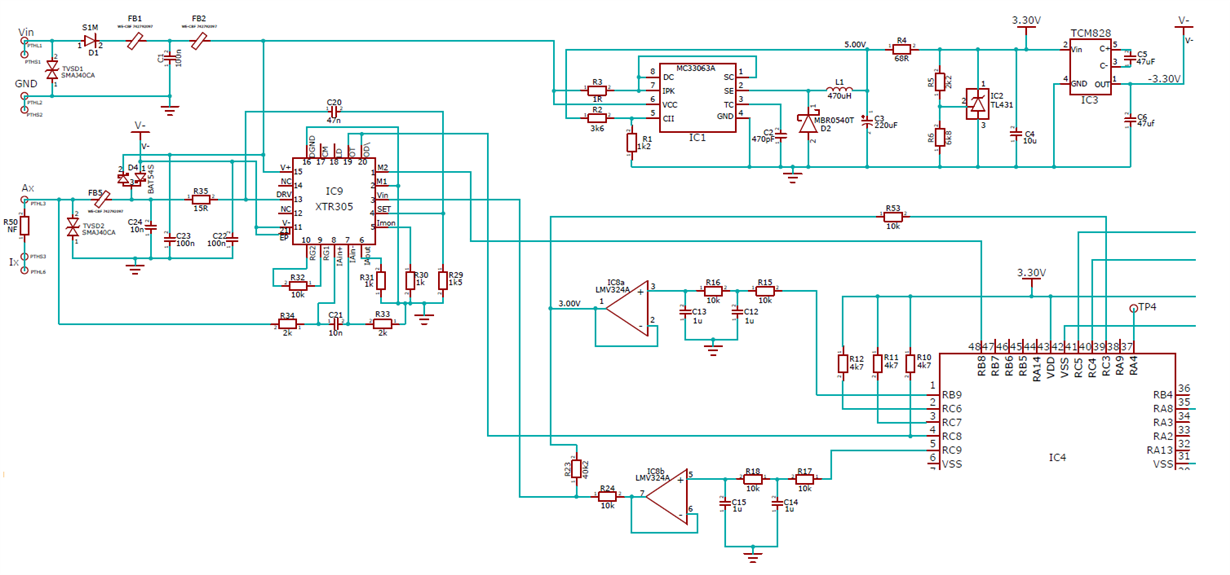Other Parts Discussed in Thread: LMV324, LM324,
The circuit below has been powered with Vin = 24V and Ax connected to Power supply 0V via a DVM in current measurement mode. Accidentaly the GND connection of the circuit has been left floating which should have been connected to Power supply 0V. On power up DVM showm around 41.5mA flowing through Ax and consequently the IC has been damaged. Could any explain the failure mode of the IC.


